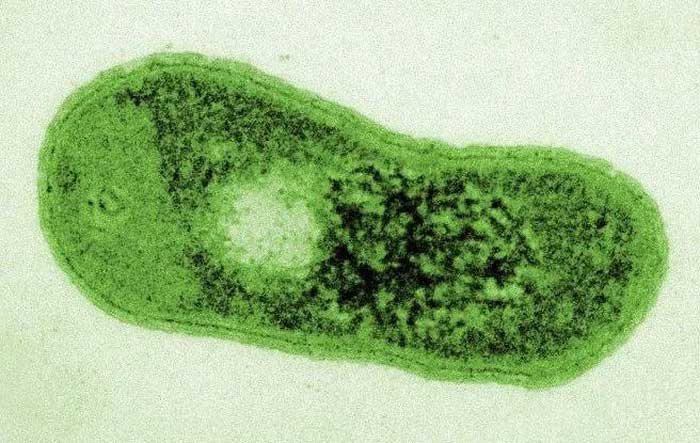Discover a species of desert bacteria with a unique photosynthetic ability
Scientists have discovered a species of bacteria that can "eat" sunlight and "breathe" oxygen.
In a paper recently published in the journal Science Advances, the team shows how this mysterious creature harvests light energy.

Microscopic image of Gemmatimonas phototrophica bacteria.
They used electron microscope images collected in four different laboratories. Their study revealed the detailed structure of the photosynthetic complex consisting of 178 pigments bound to more than 80 protein subunits of this microorganism. The light-collecting subunits are arranged in two concentric rings around the reaction center, converting the absorbed light energy into an electrical charge.
Associate Professor Michal Koblizek, Institute of Microbiology, Czech Academy of Sciences, said that this microorganism is a real masterpiece of nature. "It not only has good structural stability, but also has great light-gathering efficiency."
Although we already know about many photosynthetic bacteria, what is happening inside the Gobi Desert, where the bacterium Gemmatimonas phototrophica lives, is unique.

Diagram of two multicolored molecular rings surrounding a central circle of the photosynthetic complex from the bacterium Gemmatimonas phototrophica.
Since the pigments in the outer ring are more energetic than the pigments in the center, the whole arrangement acts as a funnel. The energy absorbed by the pigments at the periphery of this complex is transferred to the center of the complex where it is converted into metabolic energy.
Although this photosynthetic structure would require more energy than other familiar types, the researchers explain, "in return, this structure has the extraordinary stability and durability of the photosynthetic complex This may represent an evolutionary advantage".
Dr. Pu Qian, a structural biologist from the University of Sheffield, commented: "This structural and functional study has interesting implications as it shows that G. phototrophica independently evolved compact architecture , powerful and highly efficient on its own to harvest and "trap" solar energy.
We might also one day steal the secrets of G. phototrophica's ancient photosynthesis to build a future of solar-powered synthetic biology.
- The 10 most unique new species discovered in 2010
- Sheep-like sea slug species are photosynthetic
- Admire the world's oldest desert
- Discovered mechanisms for plants to have four different genotypes
- Discover shock about bacterial growth in space
- Discover a new type of bacteria
- 'Miracle' in the town located in the world's most arid desert
- Desert - CO2 sink
- The most exotic ant species in the desert: Knowing trigonometry but forget the way back if you see food
- Use bacteria to produce biofuels
- Testing to bring the metal mining bacteria to the International Space Station
- The most exotic deserts in the world
 Why do potatoes have eyes?
Why do potatoes have eyes? 'Tragedy' the world's largest carnivorous life: Death becomes ... public toilet
'Tragedy' the world's largest carnivorous life: Death becomes ... public toilet Tomatoes were once considered 'poisonous' for 200 years
Tomatoes were once considered 'poisonous' for 200 years Detecting microscopic parasites on human face
Detecting microscopic parasites on human face